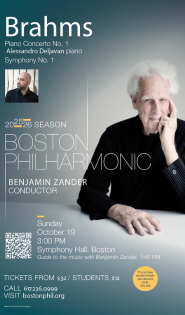Chameleon Arts Ensemble offers a generous Paris-inspired program
For Morton Feldman, titles were curious things.
While staying in Paris, the composer took walks along the Rue Fürstenberg, once the scene of Delacroix’s studio, and found himself thinking of Heinrich Heine. Feldman recalled to Paul Griffiths in 1972 that he felt a connection with the German poet. Like Heine, he was an artist in exile. Later, in the midst of a new composition, Feldman jotted down a title in a spur of the moment.
I met Heine on the Rue Fürstenberg (1972) was just one piece heard on the Chameleon Arts Ensemble’s wide-ranging season opener at First Church Saturday night, in a program that explored the music of expatriate composers who drew inspiration from the City of Light.
Form is immaterial in Feldman’s I met Heine, a spacious composition for solo voice and chamber ensemble. Instead, the slow and irregular pulses of ambiguous harmony and melody are left to resonate in space. A chamber ensemble consisting of Deborah Boldin (flute), Gary Gorczyca (clarinet), Jessica Lee (violin), Rafael Popper-Keizer (cello), Gloria Chien (piano), and William Manley (percussion) joined soprano Mary Mackenzie for a delicate reading. The biggest distractions came from the echoed cries and laughter from the play going on in the hall next door.
The concert opened with a delightful gem from another New Yorker’s experiences in Paris. Aaron Copland composed his Nocturne for violin and piano along with its companion piece, Ukelele Serenade, in the mid 1920s for one of Nadia Boulanger’s concerts. Gloria Chien’s relaxed touch in the bluesy piano harmonies and Jessica Lee’s violin line wafted gracefully overhead in dreamy phrases.
Similarly impressionistic sonorities are the building blocks of Richard Rodney Bennett’s Sonata after Syrinx (1985). A double ode to Debussy, the piece took as its cue the French composer’s Syrinx for solo flute. Bennett explored the ins and outs of this short work through the trio of flute, viola, and harp, a parallel with Debussy’s own sonata for the same instrumentation.
Before the musicians aired the Sonata, Boldin offered Debussy’s Syrinx as an introduction. Her multi-colored tone contrasted velvety sounds with more hollow ones, giving the meandering line added weight.
When Sonata after Syrinx began, it didn’t take long to appreciate the music’s dialogue of tone color, where glassy harmonies shimmer over rippling harp chords. Boldin along with violist Scott Woolweaver and harpist Barbara Poeschl-Edrich traded the rhythmic passages with finesse. Woolweaver’s edgy viola answered the richer tones of Boldin’s flute. The trio maintained good balance to the end, though some phrases were marred from wavering intonation.
No French-connection concert would be complete without Chopin’s music. Chien and Popper-Keizer offered one of the composer’s few chamber works, the Sonata in G minor for cello and piano, Op. 65.
Chopin took a long time to complete what would be his last published piece. Written for and dedicated to the cellist Auguste Franchomme, it is music with all-pervasive lyricism. The expansive and rhapsodic first movement contains brooding passages as well as moments of solitude, and the song-like phrases of the second-movement scherzo ebbed and flowed between piano and cello. In each, Chien and Popper-Keizer performed with precision, giving the piece momentum, with the cellist’s silvery tone added a touch of yearning.
Chopin’s characteristic elegance and lyricism was on full display in the third movement. Here, both musicians gave the music a feeling of quiet distance and melancholy. Popper-Keizer’s playing wasn’t as crisp as in previous movements at the start of the finale, but by the climax, he regained his focus, and the coda contained the most glittering playing in the entire piece.
The most energetic performance came at concert’s end when Chien, Lee, Woolweaver, and Popper-Keizer tackled Mendelssohn’s Piano Quartet No. 3 in B minor, Op. 3.
The four-movement work has such refinement that it’s easy to forget that the composer was only fifteen when he wrote it. Completed only months before Mendelssohn’s father took him to Paris to meet Cherubini, the quartet has an overall Mozartean style with sweeping melodies and limpid textures.
Saturday night’s performance gave Chien a chance to shine. She unleashed steady streams of punishing triplets in the outer movements. The trio of strings achieved a warm blend, laying sheets of sound over the stirring piano figures.
The program will be repeated 4 p.m. Sunday at the Goethe-Institut. chameleon.org; 617-427-8200.
Posted in Performances







